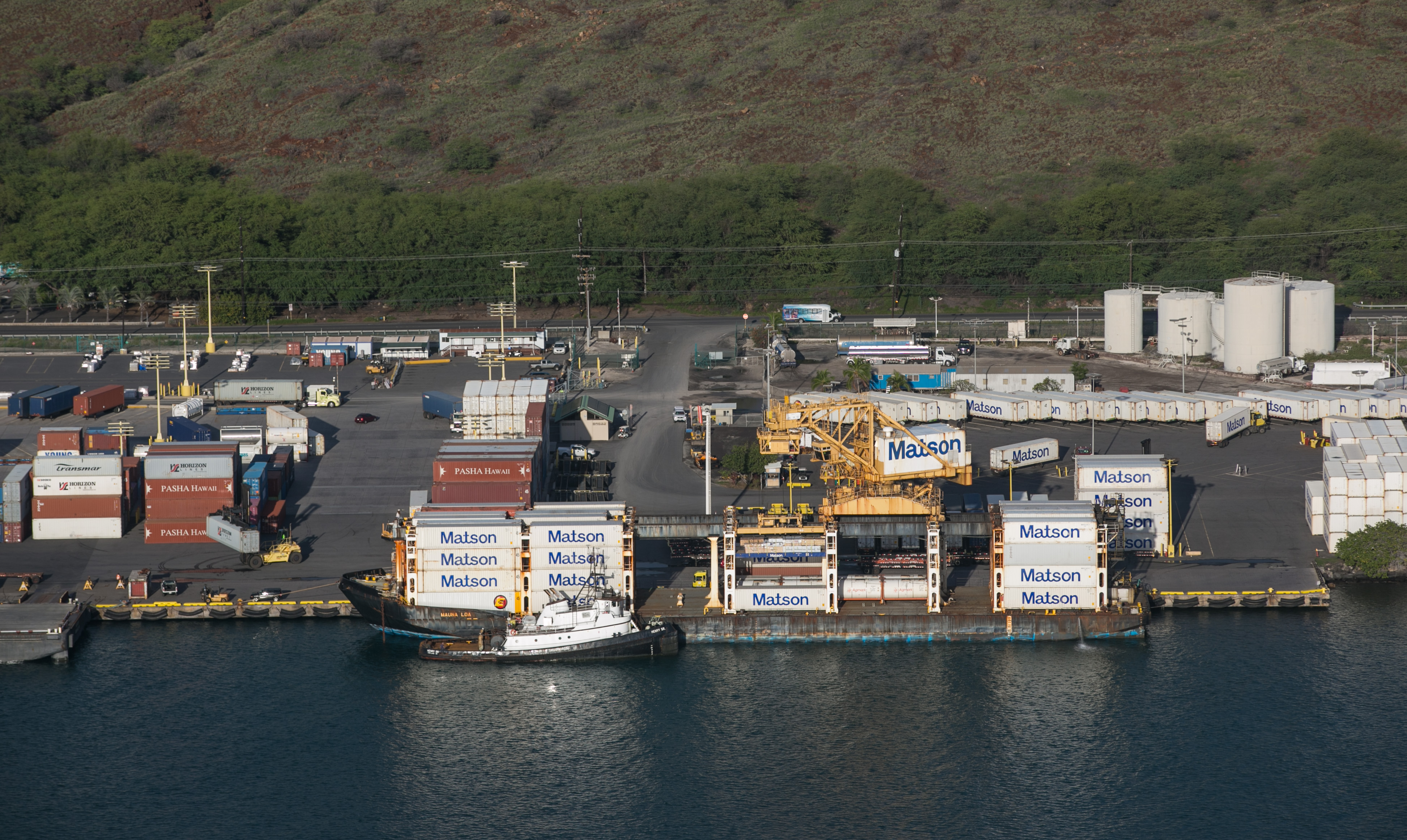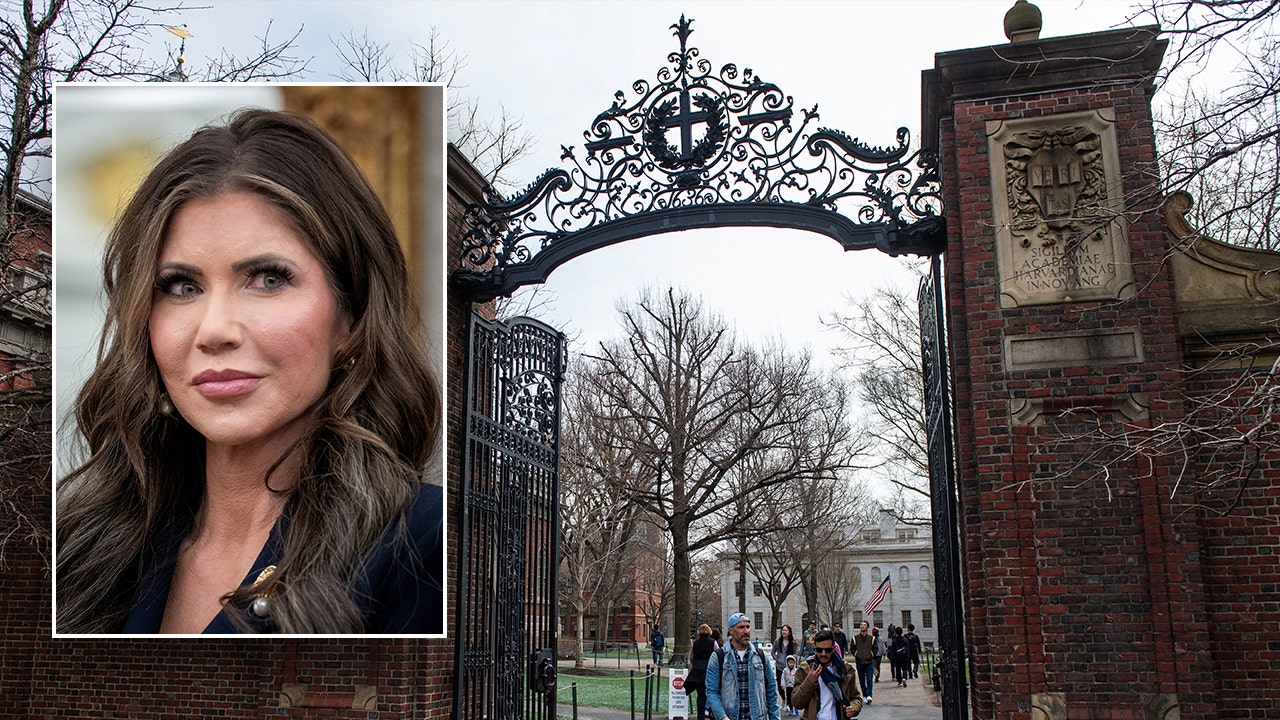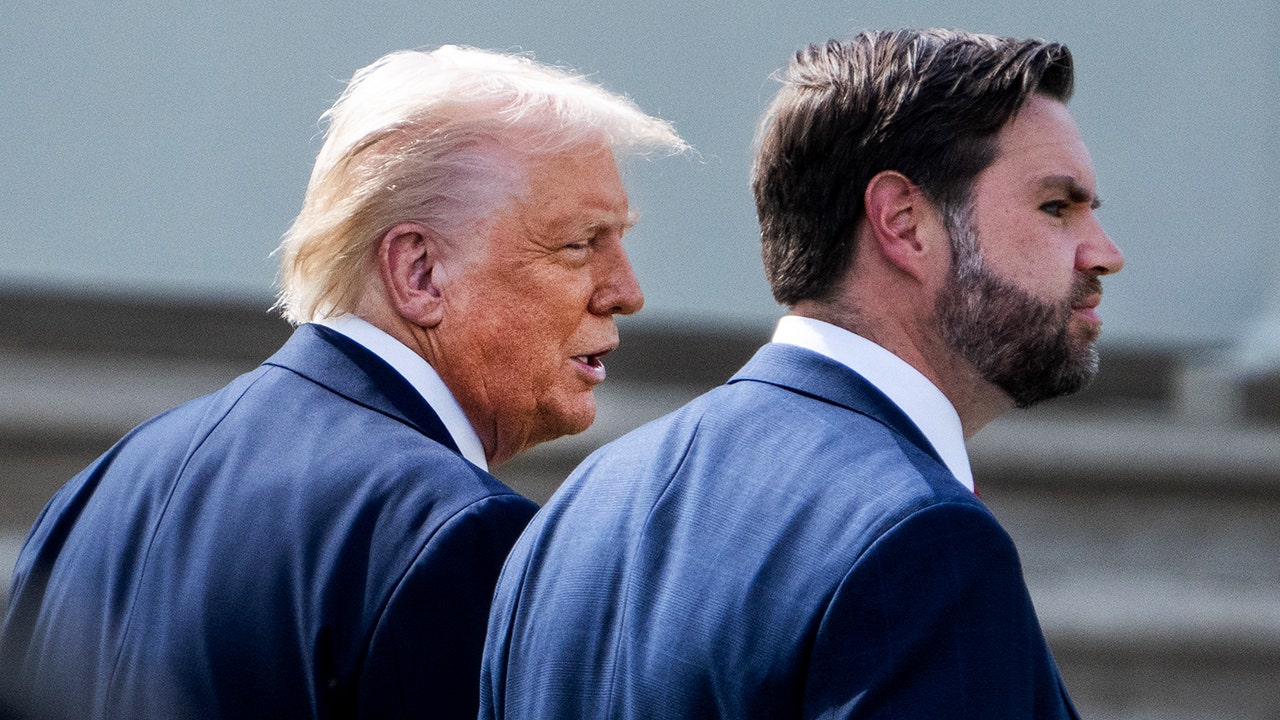Hawaii
How finding a skeleton in a Hawaii cave changed this man’s life

Native Hawaiian Keoni Alvarez has devoted his life to protecting his ohana burial cave and advocating for more Native Hawaiian burial rights.
Keoni Alvarez
Keoni Alvarez was just an 8-year-old boy when his Native Hawaiian family made a startling discovery 35 years ago. Deep in the forests of the Big Island of Hawaii, his brothers found a hidden cave when they were playing near their home in Puna — and inside the cave, they found iwi, or human skeletal remains.
Their mother called the police, and with the help of a state archaeologist, they determined that it wasn’t a missing person or homicide but part of an ancient Hawaiian burial.
Now knowing that it was there, Alvarez developed a strong sense of responsibility to the iwi. His family acted as guardians over the cave, keeping it a secret, until encroaching development made that impossible.
In the early 2000s, the affordable land around them was parceled and sold, including the burial ground. When Alvarez and his mom saw the landowner and a bulldozer leveling the land, they confronted them, yelling and demanding that they stop.
“He wanted to bulldoze the burial cave to build over it,” the now-43-year-old Alvarez told SFGATE. “I was heartbroken and sad that foreigners would ever do such a thing.”
Advertisement
Article continues below this ad
Keoni Alvarez and his mom confronted a bulldozer that was leveling the land near the burial cave.
Keoni Alvarez
Alvarez thought the state would have intervened, knowing that his family had documented the find years ago. He called the Hawaii State Historic Preservation Division, a department entrusted with protecting Hawaii’s historic places, and Alvarez learned that it had lost the file.
In Hawaii, construction must stop if human remains are found, and developers must inform the state about it so it can investigate. Whether or not the developer does that, however, is based on an honor code system. Even if a burial is there, the state still allows purchasing of the property, and if the developer follows a government burial process, it can even be built over.
In this case, Alvarez said the landowner knew there was a burial site, but since the state had lost the record and didn’t provide any mandatory procedure, the landowner claimed ignorance.
“An archaeologist retired, and they lost the records,” said Alvarez, “so I had to actually play catch-up before the burial was going to get desecrated.”
In disbelief of the problems he was facing, Alavarez, a filmmaker, picked up a camera to document his fight to save the burial cave that lasted 23 years.
Advertisement
Article continues below this ad
When Keoni Alvarez learned the burial cave his family was protecting was threatened by development, he started filming his journey to save it from being destroyed. The resulting documentary film, “Kapu: Sacred Hawaiian Burials,” can be streamed on PBS.
Keoni Alvarez
“I thought there were laws that protected these kinds of places,” he said. “And realizing that it was a problem, I decided to start to document and interview people, you know, different elders.” His completed documentary film “Kapu: Sacred Hawaiian Burials” premiered at the Maui Film Festival last year and can be streamed on PBS.
Through the years, he has become an expert in sacred Hawaiian burials. He studied the different processes of traditional burials, how to care for them and the laws governing their protection. He went on TV news and talk shows to raise awareness of the loopholes developers use to desecrate them and how much the laws differ from the belief of Native Hawaiians.
“Because the state only protects from the top down, they don’t protect like the integrity of the cave. And throughout history, in our culture, when you put one burial within a cave, the whole cave is considered a burial site,” said Alvarez. “That was part of their eternal life, and how and where they believe that their souls and their spirits have gone.”
During his 23-year journey to protect his ohana burial site, Alvarez visited other graves, including the burial place of the Kamehameha royal dynasty.
Keoni Alvarez
Advertisement
Article continues below this ad
“I found out that my family actually came from this area,” Alvarez said. “That’s the Kaui lineage, and that is my family name and my great-great-grandmother was actually from Hawaii Island, which I didn’t know.”
Alvarez’ family watched over the burial cave for many years, and kept it a secret, until development made that impossible.
Keoni Alvarez
This new realization allowed Alvarez to be recognized officially by the state as a descendant of the iwi. The new status required the government body overseeing the burial to duly consider and give “appropriate weight” to Alvarez’s wishes when determining what to do with the burial on the landowners’ property, whether that means moving it or not, or building over it.
As he was campaigning for the protection of the cave, he received a text from the owner saying that he would sell him the property for $50,000. Alvarez started fundraising to purchase the land, but then something else unexpected happened: He received a letter in the mail from a real estate agent, who said the landowner had died.
“There were three developers on that property and they all passed away,” Alvarez said. “There was a Realtor who was trying to sell it. She passed away under weird circumstances. The landowner passed away within like two or three months of what he was wanting to do.”
During his 23 year journey to protect his ohana burial site, Alvarez took part in protests to prevent desecration of iwi kupuna (ancestral skeletal remains).
Keoni Alvarez
Advertisement
Article continues below this ad
Alvarez ultimately bought the land from the beneficiaries so he could control what’s done to the property. “But for me, that’s not how we’re supposed to be doing it and there should be laws that already gives a mandatory buffer zone around these places to protect it, and we shouldn’t be saying that, ‘Oh, well, we got to try and raise the money to protect it,’” said Alvarez, who’s also become a teacher and author of a book on traditional Hawaiian burial practices.
He has since bought two other burial properties to watch over and protect from development while he advocates for a separate Hawaiian board not governed by the state that can ensure Hawaiian burials are not destroyed.
“People are still developing on burials. There’s no real law to stop them,” Alvarez said.
Editor’s note: SFGATE recognizes the importance of diacritical marks in the Hawaiian language. We are unable to use them due to the limitations of our publishing platform.
We have a newsletter all about Hawaii, with news, tips and in-depth features from the Aloha state. Sign up here.

Hawaii
UH faces uncertainty over Senate budget | Honolulu Star-Advertiser
Hawaii
Hawaii teen faces 10-year sentence for stealing pet pig, killing it to cheat in $1K hunting contest

A Hawaiian teenager is facing up to 10 years in prison after he and pal stole a woman’s pet pig and slaughtered it to cheat their way into a $1,000 hunting contest prize.
Jayden Jarnesky-Magana, 19, and accomplice Krys Ryan Saito-Carino, 20, allegedly snatched “Eddie” from Sarah Haynes’ Maui farm last May and then filmed their dogs viciously attacking the poor creature in a sham hunting video they posted on social media.
They proceeded to kill and gut Eddie and entered him at the last minute in a local “biggest pig” hunting contest — but the hunters there became suspicious after noting that the pig had been neutered and was much heavier than the typical wild pigs entered into the contest.
“Nobody believed him,” Haynes told KHON2.
Eddie was even too heavy for the two men to carry from their truck to the weigh-scale, Haynes said, but they ended up walking away with the $1,000 prize money for the biggest pig hunted.
Jarnesky-Magana and Saito-Carino were both arrested and charged in August with animal cruelty later last year following a police investigation, Maui Now reported.
In January Jarnesky-Magana changed his plea from not guilty to no contest and is scheduled to be sentenced on Wednesday on felony counts of first-degree animal cruelty and livestock theft — which each carry a five-year max sentence.
Saito-Carino, is expected to also change his plea to no contest on Wednesday, according to KOHN2.
Haynes has organized a rally outside of the Wailuku courthouse to raise awareness about animal cruelty.
“Eddie was super friendly,” Haynes said. “Little kids could hug him, you know, he’d sit. You could get him to bark like a dog. I mean, he was just the most adorable, sweet, gentle soul.”
She had adopted the pig several years ago and brought him to her Kitty Charm Farm in Haiku after he was found running around Kihei with scars and rope burns, presumably because he was used to train hunting dogs.
“And you know, his life started with cruelty, and I was determined to make that go away for life. And, unfortunately it ended the same way it started, you know, with hunting dogs.”
“I don’t want to ruin anybody’s life and I don’t think there’s any possibility of them getting the 10 years, but what I would like to see, I would like to see a punishment,” he added.
“This wasn’t an innocent mistake, this wasn’t confusion about the law. This was a planned attack on my pet,” she added.
Hawaii
Kīlauea Volcano Update for Tuesday, April 15
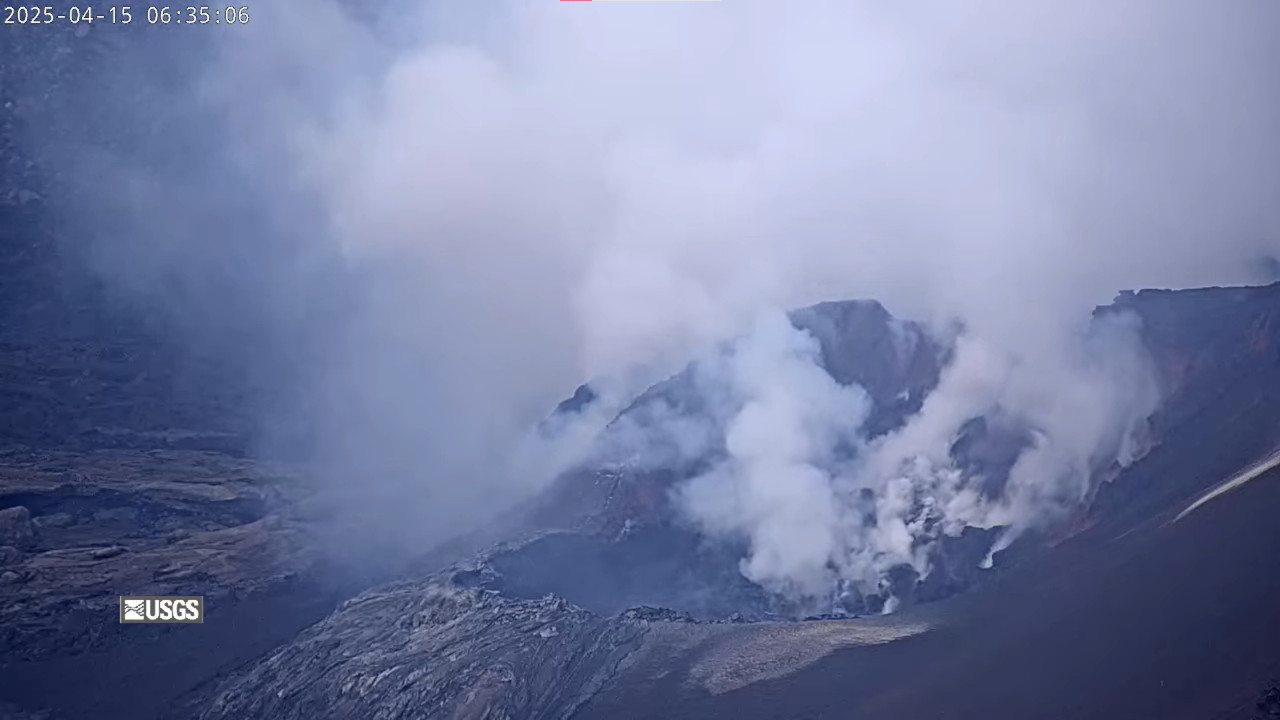
(BIVN) – The ongoing eruption at the summit of Kīlauea remains paused as of Tuesday morning, and scientists expect the next episode of lava activity to begin at any moment.
The USGS Hawaiian Volcano Observatory reported Monday night that if prior patterns of inflation hold, Episode 18 is likely to start between now and late Wednesday.
Overnight, both the north and south vents within Halemaʻumaʻu crater were degassing and displaying a strong glow.
USGS webcam view of the volcanic vents at the summit of Kīlauea
The USGS HVO posted this analysis on Monday:
The current eruption has been characterized by episodic fountaining not seen in any of the other Halemaʻumaʻu eruptions since 2020. Fountains and lava flows have erupted from two vents that we refer to as the north vent and south vent. Each of the previous 16 fountaining episodes lasted from a few hours to over a week and has been accompanied by strong deflation of the summit region. Pauses between the fountaining episodes have been marked by an immediate change from deflation to inflation as the magma chamber recharges and repressurizes.
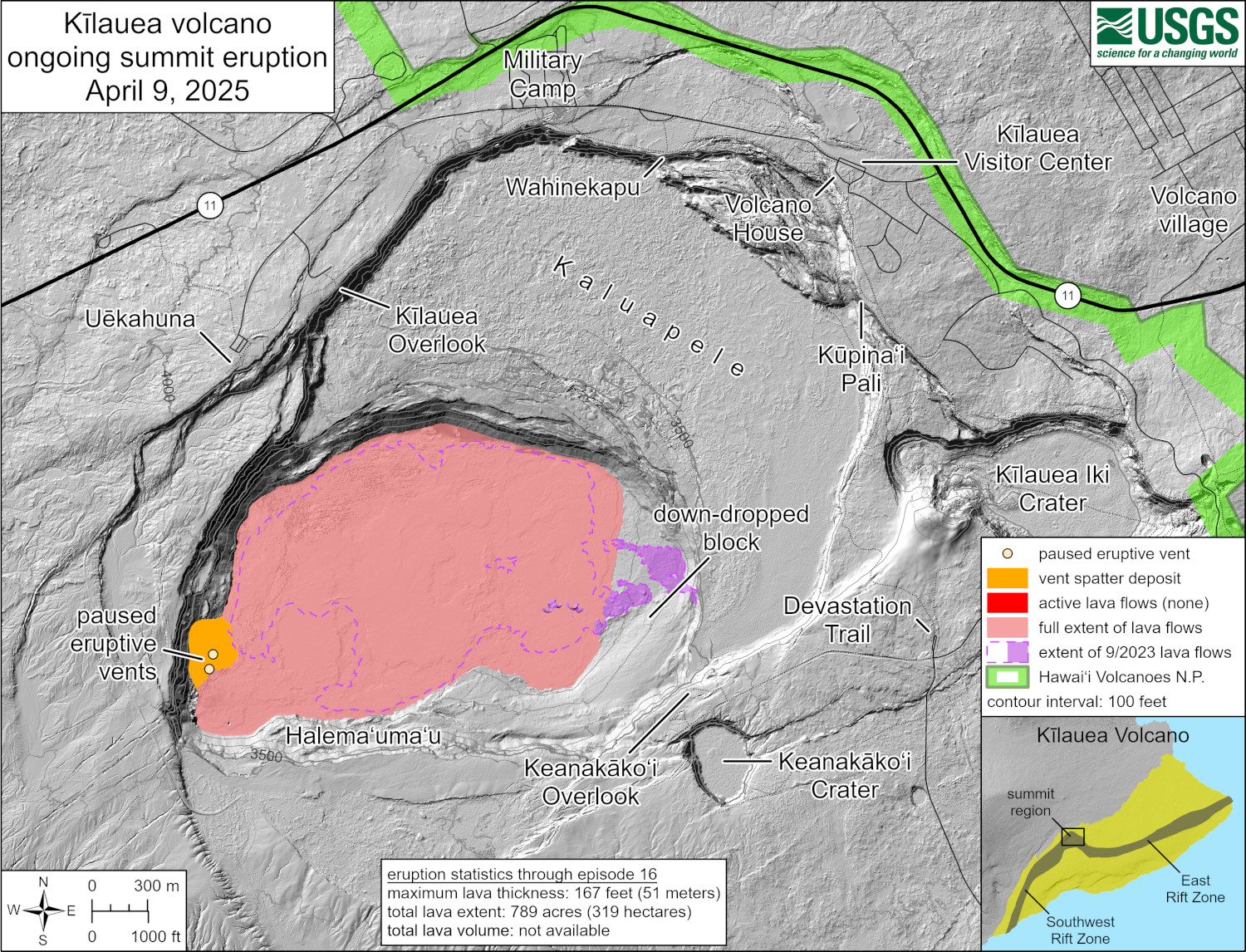
USGS: “This reference map depicts the Kīlauea summit eruption within Halema‘uma‘u crater that began on December 23, 2024. As of this posting on April 9, the eruption has had seventeen episodes, with the most recent concluding earlier this morning. However, most of the map data included here were collected during a Hawaiian Volcano Observatory helicopter overflight on April 2, immediately following episode 16; for this reason, the provided statistics only reflect the first sixteen episodes of the eruption. Additionally, the collected data were insufficient to calculate the total lava volume for the eruption at that time.”
Analysis of inflationary tilt patterns prior to the onset of each fountaining episode allows a time window of probability for the onset of new episodes to be estimated. These are calculated using both minimum inflation necessary to start a new eruption and the rate of inflation fit to data derived from past eruptive episodes. The onset of episode 17 occurred earlier than forecasted, as the fountaining began prior to the tilt rebounding to the expected threshold that had been previously associated with episode onsets. If the eruption returns to pre-episode 17 inflation behavior, data suggest episode 18 is likely to start as early as today or as late as Wednesday of this week, within the 0-3 days, with Tuesday most likely. This window may be adjusted if inflation rates change significantly. Based upon prior cycles of fountaining and deflation, episode 18 fountaining is likely to be less than 24 hours long.
The USGS Volcano Alert Level for Kīlauea is WATCH.
-

 Movie Reviews1 week ago
Movie Reviews1 week agoFilm Review: 'Warfare' is an Immersive and Intense Combat Experience – Awards Radar
-

 News1 week ago
News1 week ago3 Are Killed in Shooting Near Fredericksburg, Va., Authorities Say
-

 Health1 week ago
Health1 week agoAs RFK Jr. Champions Chronic Disease Prevention, Key Research Is Cut
-

 News1 week ago
News1 week agoBoris Johnson Has Run-In With Feisty Ostrich During Texas Trip
-

 World1 week ago
World1 week agoEPP boss Weber fells 'privileged' to be targeted by billboard campaign
-

 Technology1 week ago
Technology1 week agoMeta got caught gaming AI benchmarks
-

 World1 week ago
World1 week agoDR Congo repatriates three US citizens convicted over failed coup
-

 News1 week ago
News1 week agoTrump Asks Supreme Court to Let Him Fire Agencies’ Leaders



